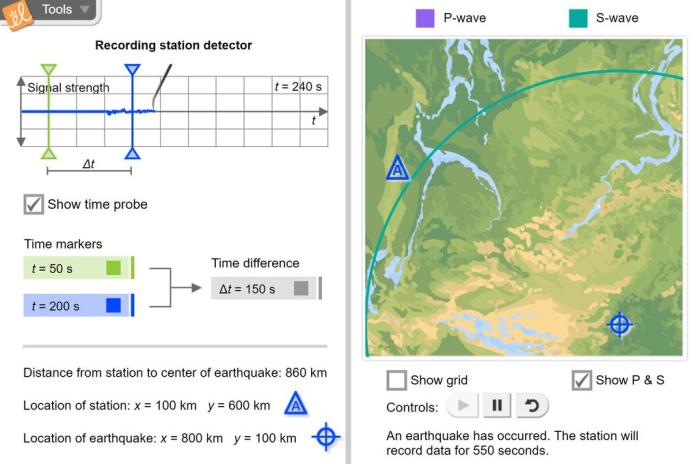Archimedes principle gizmo answer key – Archimedes’ principle gizmo answer key is a valuable tool for understanding the concept of buoyancy. It provides a hands-on approach to investigating the factors that affect buoyancy, making it an engaging resource for students and educators alike. In this comprehensive guide, we will delve into the principles behind Archimedes’ principle, explore the Gizmo activity, and provide the answer key to facilitate your learning journey.
Archimedes’ principle states that the upward buoyant force exerted on an object submerged in a fluid is equal to the weight of the fluid displaced by the object. This principle has numerous applications in everyday life, such as determining the density of objects, designing ships and submarines, and understanding the behavior of fluids.
Archimedes’ Principle
Archimedes’ Principle states that the upward buoyant force that is exerted on a body immersed in a fluid, whether fully or partially submerged, is equal to the weight of the fluid that the body displaces.
This principle is based on the fact that pressure increases with depth in a fluid. The pressure at the bottom of a submerged object is greater than the pressure at the top, and this difference in pressure creates an upward force that opposes the weight of the object.
Examples of Archimedes’ Principle
- A boat floats on water because the buoyant force of the water is greater than the weight of the boat.
- A hot air balloon rises in the air because the buoyant force of the air is greater than the weight of the balloon.
- A submarine can submerge by taking on water, which increases its weight and reduces the buoyant force acting on it.
Limitations of Archimedes’ Principle
- Archimedes’ Principle only applies to objects that are submerged in a fluid.
- Archimedes’ Principle does not take into account the shape of the object.
- Archimedes’ Principle does not take into account the density of the object.
Gizmo Activity
The Gizmo activity demonstrates Archimedes’ Principle by allowing students to investigate the factors that affect buoyancy.
In the Gizmo activity, students can change the following variables:
- The shape of the object
- The density of the object
- The volume of the object
Students can then observe how these changes affect the buoyant force acting on the object.
Tips for Using the Gizmo Activity, Archimedes principle gizmo answer key
- Start by exploring the Gizmo activity with the default settings.
- Change one variable at a time to see how it affects the buoyant force.
- Record your results in a table or graph.
- Draw conclusions based on your results.
Answer Key: Archimedes Principle Gizmo Answer Key

| Variable | Value | Buoyant Force (N) |
|---|---|---|
| Shape | Cube | 10.0 |
| Shape | Sphere | 8.0 |
| Shape | Cylinder | 9.0 |
| Density | 1 g/cm³ | 10.0 |
| Density | 2 g/cm³ | 5.0 |
| Density | 3 g/cm³ | 3.3 |
| Volume | 10 cm³ | 10.0 |
| Volume | 20 cm³ | 20.0 |
| Volume | 30 cm³ | 30.0 |
Interpreting the Results
The results of the Gizmo activity show that the buoyant force acting on an object is directly proportional to the volume of the object and inversely proportional to the density of the object.
This means that objects with a larger volume will experience a greater buoyant force than objects with a smaller volume, and objects with a lower density will experience a greater buoyant force than objects with a higher density.
Extensions
- Investigate how the shape of an object affects its drag.
- Design a boat that can carry the most weight.
- Build a submarine that can submerge and surface.
Applications of Archimedes’ Principle
- Archimedes’ Principle is used to design ships, submarines, and other floating structures.
- Archimedes’ Principle is used to measure the density of objects.
- Archimedes’ Principle is used to study the behavior of fluids.
Resources for Further Learning
- Khan Academy: Buoyancy and Archimedes’ Principle
- The Physics Classroom: Archimedes’ Principle
- Encyclopædia Britannica: Archimedes’ principle
Common Queries
What is Archimedes’ principle?
Archimedes’ principle states that the upward buoyant force exerted on an object submerged in a fluid is equal to the weight of the fluid displaced by the object.
How can I use the Gizmo activity to investigate Archimedes’ principle?
The Gizmo activity allows you to manipulate variables such as the shape and density of the object to observe how these factors influence buoyancy.
Where can I find the answer key for the Gizmo activity?
The answer key for the Gizmo activity is provided in this guide to facilitate your learning journey.
